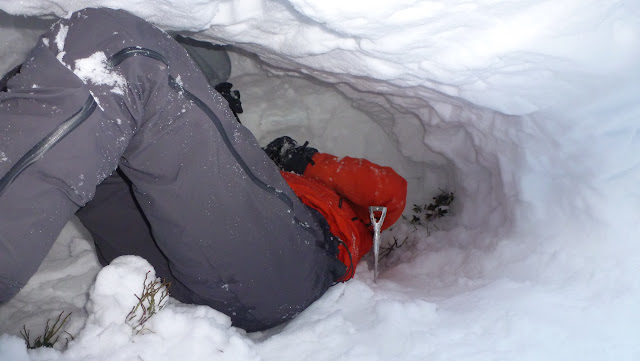When it comes to F-You money, investing and early retirement, I find the philosophical part of it the most fun. It has greatly influenced my personal philosophy, which is apparent in the two most read posts of this blog: one about non-material value and another about thriving during hard times.
Part 1 of this post was also mostly about philosophical advice. Unfortunately, you can’t eat philosophy and eventually you need to invest. I found many investing articles incomplete and books too long, so I’ve written my own tutorial. Also, most of the published advice is written for Americans who usually have better offerings and simpler choices, but this post is aimed at Europeans.
I assume basic knowledge of terminology, so you should know what bonds, stocks, ETFs, TER, small-cap, real returns and others are. If not, reading the first ~10 parts of Jim Collins’ stock series and additional googling on Investopedia should help.
The short version
People usually invest their money via a bank or a retirement fund. They loan the money to someone or buy stocks. Bonds (=loans) have real yearly returns of 0 to 4% and stocks of 6 to 8%. All of these are average returns over the long term adjusted for inflation. Both banks and retirement funds typically charge 1–2% yearly, so your yearly profit is greatly reduced, for example you might get 4.5% instead of 6% each year. Lately, it has become very cheap to circumvent the middlemen via funds traded on stock exchange (ETFs).You don’t have to have a super-high salary to invest this way. Here’s a simple rule of thumb: calculate 1% of the money you typically save every 3 months and check if it’s higher than broker fees for a single transaction (more on brokers later). With a low-cost broker like CapTrader, saving at least 400 € every 3 months fulfills the criterion.
There are 5 steps to a simple investing plan, especially suited for a beginner.
- Get an account with a broker trading on the German Xetra exchange. CapTrader is a low-cost broker available in many European countries. Slovaks and Czechs can also use Lynx, which is based on the same platform and 20% more expensive, but they have phone support that speaks Czech.
- When do you need the money and what is your risk tolerance? Would you risk higher expected growth for more risk? Answers to these questions determine your bonds/stocks ratio. Betterment has some nice charts that should help you find the right ratio. Young people saving for retirement can have up to 80% of their investments in stocks. This is by far the most important step, so take your time to figure out your risk tolerance.
- For the stock part of the portfolio, I recommend one of these 2 global ETFs:
- Vanguard FTSE All-World Accumulating, accumulating, TER 0.22%.
- SPDR MSCI ACWI IMI, accumulating, TER 0.4%. Same as above but contains small-cap too.
- For a portfolio with more than 60% of stocks (i.e. higher risk), choose one of:
- iShares Core Global Aggregate Bond EUR Hedged, accumulating, TER 0.1%
- iShares Core Global Aggregate Bond GBP Hedged, accumulating, TER 0.1%
- SPDR Bloomberg Barclays Global Aggregate Bond CHF Hedged, accumulating, TER 0.1%
Broad bond indexes are typically biased towards long-term bonds, which have better yields but also higher risk. In a low-risk portfolio (less than 60% stock allocation), you can open a savings account in a bank or search for ETFs with lower risk—short-term government bonds have the lowest risk. Also check out Betterment’s allocation for low-risk portfolios here and here. Bear in mind that you should bias towards Europe instead of USA. - Invest every time you saved enough money that the broker fees are less than 1% of your saved amount. Then, once a year, rebalance your portfolio. For example, if stocks over-performed bonds, sell some stocks and buy bonds to get back to your bonds/stocks ratio. This reduces volatility.
The long version
Read on if you’re fine with a more complex portfolio or want to know why I made the suggestions above.US estate and gift tax
[Update February 2019: Investing via US ETFs is now very hard for Europeans, so this is no longer relevant.]Stock investing
My thesis is that the stock part of a portfolio should be based on market capitalization indexes, containing thousands of stocks in multiple countries ranging from small- to large-cap.Capitalization-weighted indexes
Stocks for the Long Run lists a lot of strategies that can beat the market, including the January effect. For small-cap stocks, you could have beaten the market by buying in December and selling in late January. The book mentions that the strategy still worked during the 1990s but stopped working since 1994, which is coincidentally the year the book was published. When a simple strategy becomes well-known, people start exploiting it and it soon stops being profitable.The book also mentions high dividend yield and low P/E ratio as investing strategies that beat the market for decades. Random check showed that high-dividend yield strategy also seems to have stopped working in the last 3 to 5 years. The value premium is still there but there is a big academic debate whether that’s due to higher risk or not.
There are plenty of incorrectly priced instruments at this moment. However, you won’t take advantage of them with a strategy that is easily accessible to a layperson or implemented by tens of publicly accessible funds. Someone else with more money or resources has already beat you to it. I’m only using market capitalization indexes, because then my strategy is the average of all strategies. Yes, I’m only getting the average return, but the average is still very high.
I’ve read a few investment books and investment articles but most of them are intellectually dishonest. They spend 300 pages convincing you to not try beating the market and in the end they allocate exactly 5% to emerging markets (EM), when the global market allocates about 10% in EM right now (using MSCI’s definition of emerging markets). They don’t explain why 5% is better than 8.647% or any other arbitrary number. In fact, printing the percentage in a book is a mistake in my opinion, since it should be a moving target.
There are valid reasons for not investing exactly 10% in EM, for example because historically they have shown greater risk and higher volatility, which was rewarded with extra 1–2% yield. If you don’t want to take the risk, allocate less than 10%; if you like risk, allocate more. Betterment is the only place where they do it right in my opinion. It’s an American investment company (robo-advisor), but their ETF portfolios for various risk levels are completely public and you are free to take inspiration.
The 15/30-stock diversification myth
A Random Walk Down Wall Street, probably the most famous investing book, claims that you can achieve great diversification by only picking 15 random US stocks. Interestingly, Burton Malkiel is a coauthor of a paper claiming that this number is much higher now than 40 years ago, but he still hasn’t changed the text of the book in the newer editions (I might be misunderstanding something in the paper too). To be properly diversified, you need to own hundreds or thousands of stocks.My stock portfolio
My own stock portfolio contains 3 ETFs that span 46 countries from small- to large-cap and contain about 5000 stocks in total. These ETFs roughly correspond to the MSCI ACWI IMI index that covers about 99% of the global investable market.- iShares Core MSCI World, accumulating, TER 0.2%.
- iShares Core MSCI Emerging Markets IMI, accumulating, TER 0.18%.
- iShares MSCI World Small Cap, accumulating, TER 0.35%.
Bond investing
While a lot of the stock investing advice applies to bonds (e.g. diversification), in addition there is a significant currency risk and bonds are more complex with parameters like credit risk and maturity. I understand bond investing less well and it seems the experts are equally confused. My thesis is that I should own multiple currencies, mostly long-term government bonds. Some home bias is fine, especially for low-risk portfolios. Also, currency hedging pays off for bonds.Long-term bonds are more risky but also have higher yields in the long term, so they are fine in a high-risk portfolio. I see little reason to own many corporate bonds when I have a lot of stocks, since these two are correlated.
I own iShares Core Global Aggregate Bond EUR Hedged (accumulating, TER 0.1%), which is one of the bond funds recommended above in the simple portfolio. It's one of the cheapest bond funds on the market and it's hedged. There's little to be gained by mixing more funds.
If you want to know more about bonds, Betterment has informative articles with visualizations, for example here, here and here. As for books, in addition to Random Walk and Stocks for the Long Run, I highly recommed Rick Ferri’s All About Asset Allocation.
REITs (real estate)
I own SPDR Dow Jones Global Real Estate UCITS ETF (distributing, TER 0.4%), which is a global real estate fund. Unfortunately, the fees for REITs are still fairly high in Europe, so I only allocate a few percent of my whole portfolio to real estate.No cash
Traditional advice tells you to keep 5 to 10% of your portfolio in cash, but I don’t do that. When you do the math, it’s not worth it. I’ve instead bumped the bond allocation percentage and I only keep twice my monthly spending available.Choosing ETFs
If you want to search for other ETFs than the ones listed in this post, I recommend using justETF which contains all ETFs traded in Europe. You can limit your search by many criteria, including:- Distributing versus accumulating: Accumulating ETFs immediately reinvest dividends, so you are always fully invested and your transaction costs are lower. They might also be more tax-efficient.
- Tracking error: Total expense ratio (TER) causes an ETFs to perform worse than the underlying index, but there are other factors at play too. I’ve already mentioned security lending and another one is replication method. Many ETFs don’t own the full index but only a subset of it, which introduces an error that can go either way. There are also synthetic ETFs that don’t actually own the underlying securities and do some magic instead, which also introduces tracking error.
- Replication method: I only use full-replication or sampling ETFs, because I don’t understand synthetic ETFs. Full-replication and sampling ETFs own the securities from the underlying index.
- Domicile: The most tax-efficient ETFs are domiciled in Ireland or Luxembourg.
- Cost of buying: Some ETFs are only available on exchanges with higher broker fees or in a currency that you don’t earn. They might also have a high bid-ask spread. All these make buying more expensive. However, since these are one-time costs, I don’t think they are very important. Recurrent fees are much more important.










